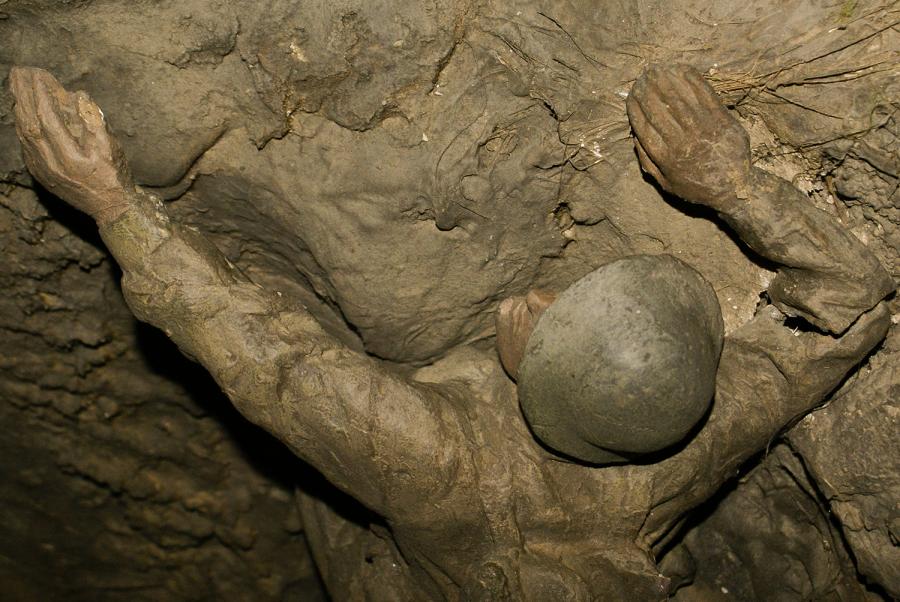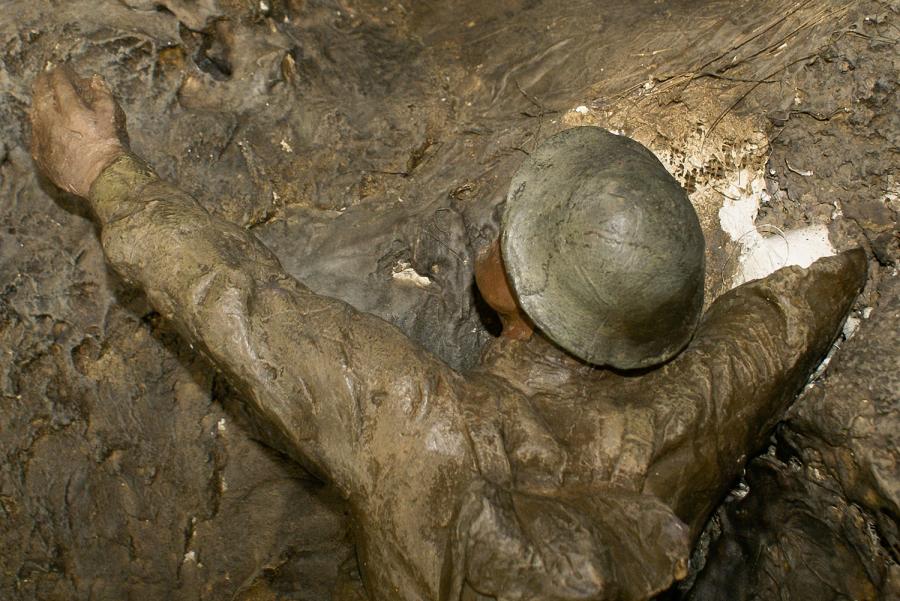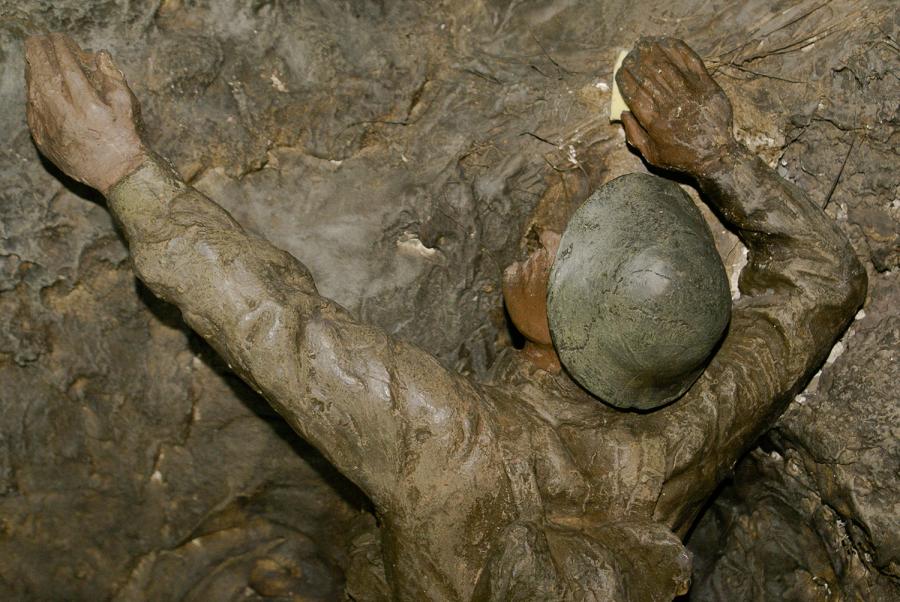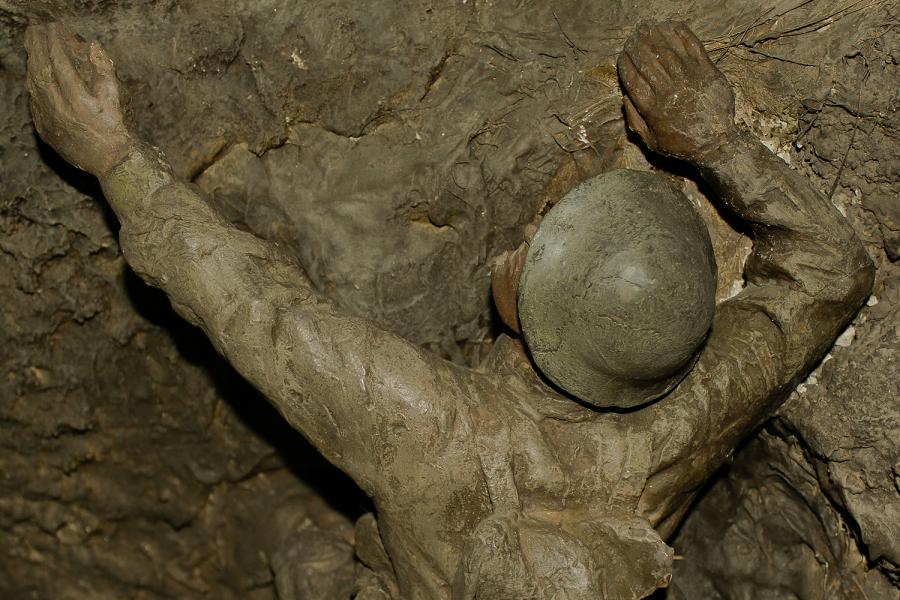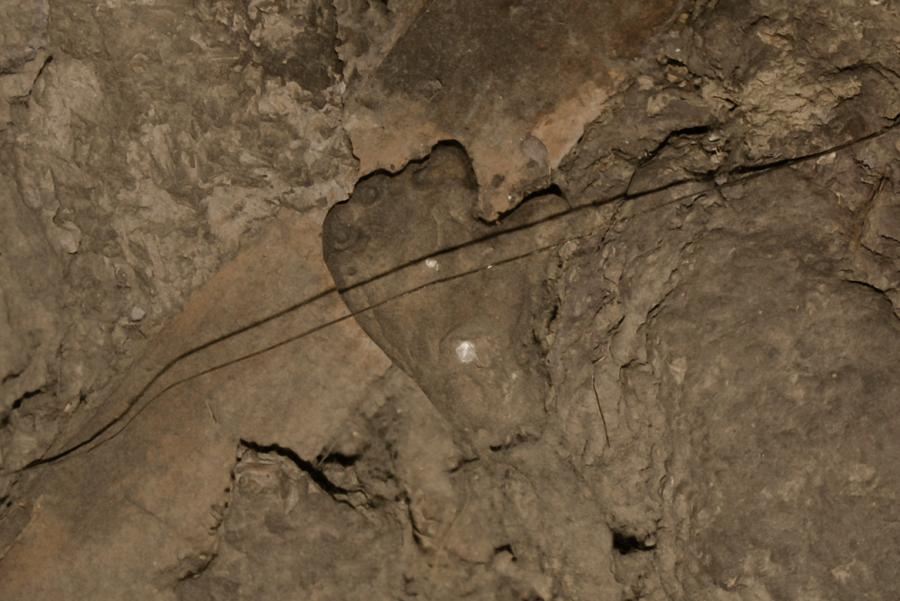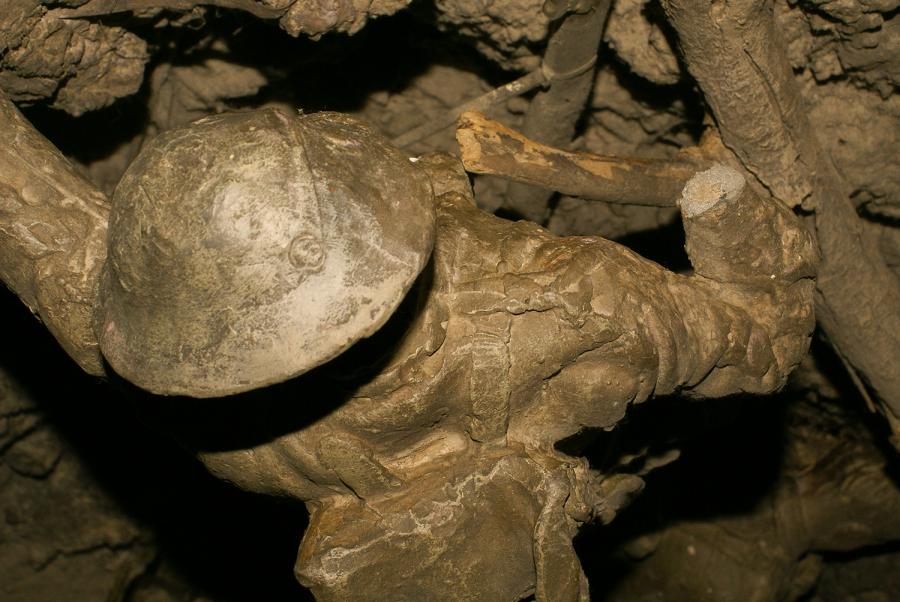Repairing the diorama figures (Ypres, 1917)

One of the most astonishing aspects of the First World War dioramas are the figures of soliders in battle. The figures show expressive action in minute detail. The figure on the Ypres, 1917 diorama were sculpted by Wallace Anderson between 1922-23 and later cast in metal in 1931.
Conservators are currently working to clean and repair the dioramas, including the figures. In this blog post we have selected two examples of figures found in a damaged state from the Ypres, 1917 diorama. Before, during and after treatment photographs are used to show the process of conservation.
The first figure was found with a brake at its right elbow. The figure was cleaned and the broken limb readhered.
The second figure was found without a right hand. During our investigation, the absent hand was found on the ground near the figure’s feet. The figure was cleaned and the hand was readhered and supported while the adhesive was allowed to set.
The conservation grade adhesive used in these repairs will not harm the figures and can be easily removed if necessary.
In future blog posts we hope to show details of the methods we use to replace missing components of the dioramas.
Thanks for your interest and we look forward to reading your comments.
